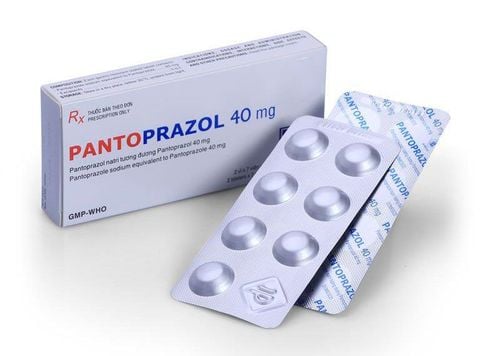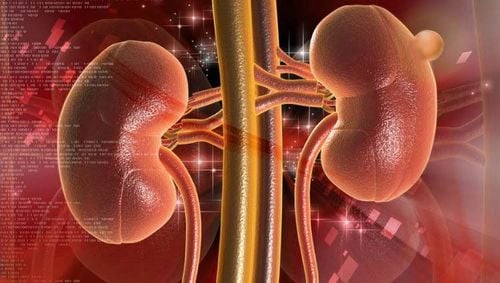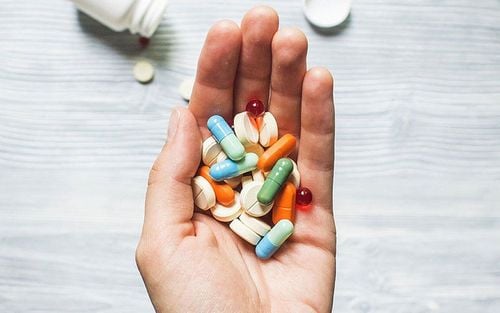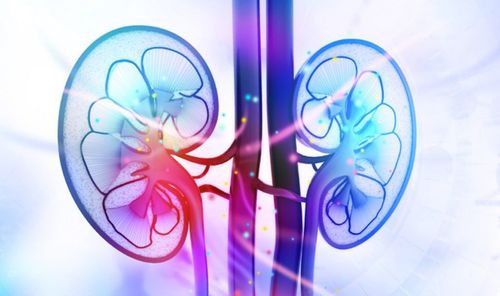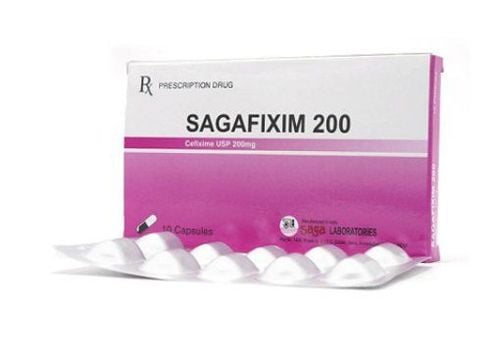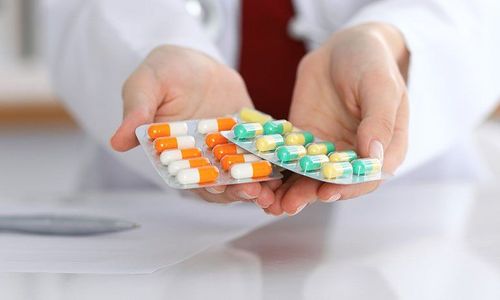This is an automatically translated article.
The creatinine clearance test is performed to assess clinical renal function. From there, this test helps doctors detect early kidney failure and other diseases to come up with the most appropriate treatment regimen.
1. Some related concepts
About the body's blood filtering mechanism: The whole body's blood will flow through the kidneys hundreds of times per day. The kidneys push the fluid in the blood through kidney units (nephrons) like small filters. The kidneys then reabsorb most of the filtrate back into the bloodstream. The fluid and waste products that are not reabsorbed by the kidneys are excreted through the urinary tract.
The glomerulus is a tuft of microvessels located inside the renal units, which play an important role in the filtration system. The amount of blood that is filtered through the glomeruli in a unit of time is called the glomerular filtration rate (GFR). Creatinine is a catabolism product of creatine phosphate, completely eliminated by the kidneys, proportional to the glomerular filtration rate. Because glomerular filtration rate cannot be measured directly, a creatinine clearance test will be performed to estimate glomerular filtration rate. It is also the method of measuring the basic glomerular filtration rate in use today.
Creatinine clearance depends on the amount of blood the body delivers to the kidneys for filtration and the filtering capacity of the renal tubules. If the amount of blood filtered is reduced, the patient may have problems such as renal atherosclerosis, dehydration, or shock. The activity of the urogenital tubules will be reduced due to diseases such as acute tubular necrosis, glomerulonephritis,...
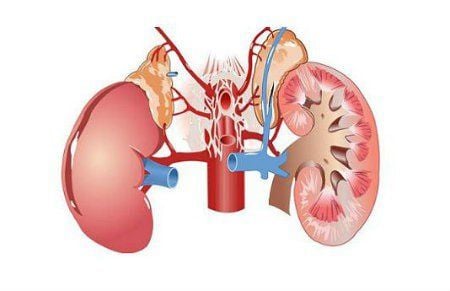
Creatinin có liên quan đến bệnh lý viêm cầu thận
2. What is the creatinine clearance test?
Creatinine clearance test is a method of collecting 24-hour urine samples and serum creatinine levels. Creatinine clearance was calculated by the formula:
CC = UV/P.
Where:
U: The number of milligrams of creatinine in each deciliter of urine within 24 hours; V: Volume of urine output per minute (milliliters); P: Serum creatinine in milligrams/deciliter.
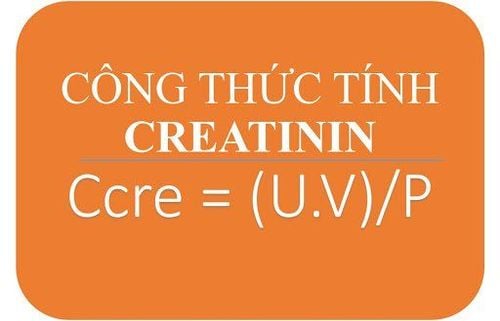
3. Indications for calculation of creatinine clearance
Calculation of creatinine clearance is a measure used to:
Measure glomerular filtration rate, evaluate the filtering capacity of the kidneys; Monitor for increased creatinine levels or detect protein in the urine through urinalysis; Performed when kidney disease is suspected through the following symptoms: Swelling (face, wrists, abdomen, thighs, ankles); foamy, bloody, coffee-colored urine; decreased urine output; a burning sensation or unusual discharge while urinating; change in the frequency of urination; hip pain near the kidney site; hypertension ; blood or protein in the urine; Performed when decreased renal blood flow is suspected due to another disorder such as congestive heart failure.

Tính hệ số thanh thải creatinin được chỉ định cho một số trường hợp cụ thể
4. Procedure for calculating creatinine clearance
4.1 Prepare the patient to discuss the procedure with the physician; There is no need to abstain from eating and drinking before performing the test; In some cases, it may be necessary to abstain from cooked meat, tea, coffee or not take medicine on the day of the test; You may need to temporarily stop taking some medications as prescribed by your doctor. 4.2 Procedure Take a 24-hour urine sample, discard the first urine and collect a sample within the next 24 hours; Collect urine samples collected in the following 24 hours; The doctor instructs the patient to preserve the urine sample: Keep it cold within 24 hours, specify the time to start collecting the first urine sample on the urine container; Indication for the last urine collection at the end of 24 hours; Venous blood sampling within 24 hours of urine collection; Specify the patient's age, weight, and height in the test sheet; Send the urine sample to the laboratory immediately.
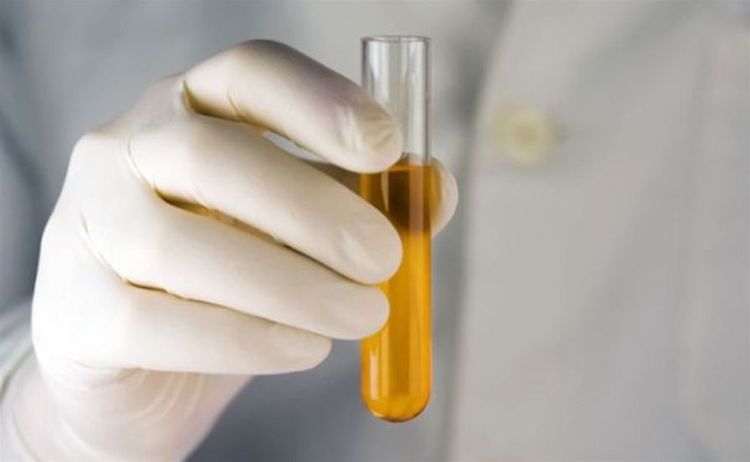
Mẫu nước tiểu được sử dụng làm xét nghiệm
*Note:
A urine sample should be taken before defecation so that urine is not contaminated with feces; Do not put toilet paper in the urine sample container; Encourage the patient to drink water within 24 hours (unless water is contraindicated); Excessive exercise should not be done within 24 hours of urine collection because it may increase creatinine clearance.
5. Read the results of calculating the creatinine clearance coefficient
5.1 Normal results Men under 40 years old: 107-139 ml/min or 1.78-2.32 ml/s (SI units); Females under 40 years old: 87-107 ml/min or 1.45-1.78 ml/s (SI unit); Newborns: 40-65 ml/min. Indicators decreased by 6.5 ml/min/every 10 years of age due to decreased glomerular filtration rate.
Predicted glomerular filtration rate (eGFR): more than 60 ml/min/1.73 m2.
5.2 Abnormal results Increased concentration: Due to exercise, pregnancy or high cardiac output syndrome; Decreased concentration: Due to impaired renal function (glomerulonephritis, acute tubular necrosis, renal artery atherosclerosis), conditions causing decreased glomerular filtration rate (shock, dehydration, congestive heart failure, cirrhosis ascites,...).
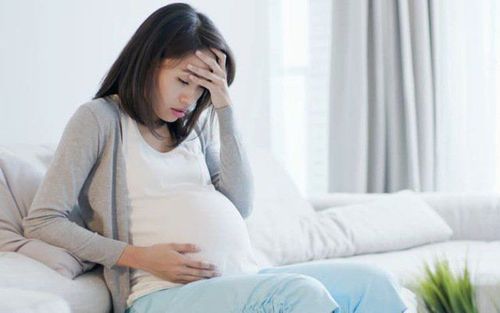
Phụ nữ mang thai mắc hội chứng cung lượng tim cao
*Note about creatinine clearance calculation results:
People with only one dysfunctional kidney or only one normal healthy kidney still have normal creatinine clearance because healthy kidneys will increase their filtration rate to compensate; Creatinine clearance tends to decrease with age because glomerular filtration rate also decreases with age; Exercise can increase creatinine levels; A high-meat diet may cause a slight increase in creatinine clearance; Incomplete urine collection may give lower and inaccurate numbers; Pregnancy increases creatinine clearance; Predicted glomerular filtration rate may be inaccurate in obese, elderly, severely malnourished, pregnant, paraplegic or quadriplegic; Certain drugs such as aminoglycosides, cimetidine, heavy metal chemotherapy drugs, and nephrotoxic drugs such as cephalosporins can increase creatinine levels; Certain medications, such as drugs that interfere with creatinine secretion, and antibiotics, can lower creatinine levels.
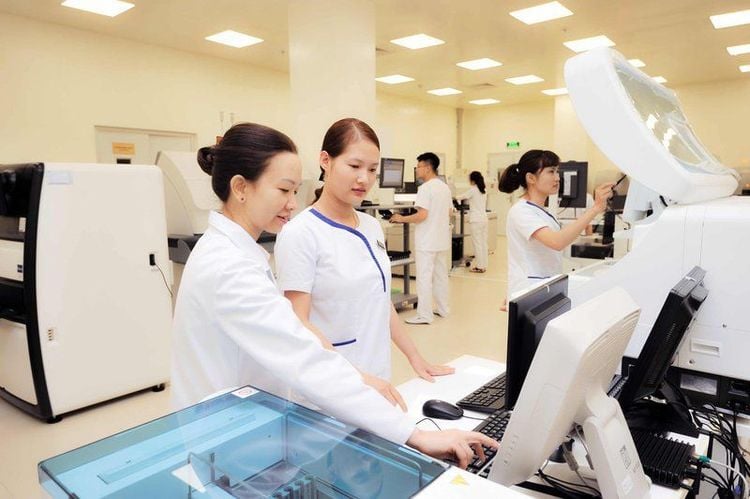
Xét nghiệm cần được thực hiện tại cơ sở y tế uy tín
To obtain the most accurate results, the patient needs to follow the doctor's recommended method of calculating the creatinine clearance. From there, the diagnosis and treatment of related diseases will be made better.
To register for examination and treatment at Vinmec International General Hospital, you can contact Vinmec Health System nationwide, or register online HERE
Recommended video:
Health check recurring at Vinmec: Protect yourself before it's too late!
SEE MORE
Meaning of tests to evaluate kidney function Tests to do to evaluate kidney function Role of creatinine in the blood




